The Festive Menu of Liguria
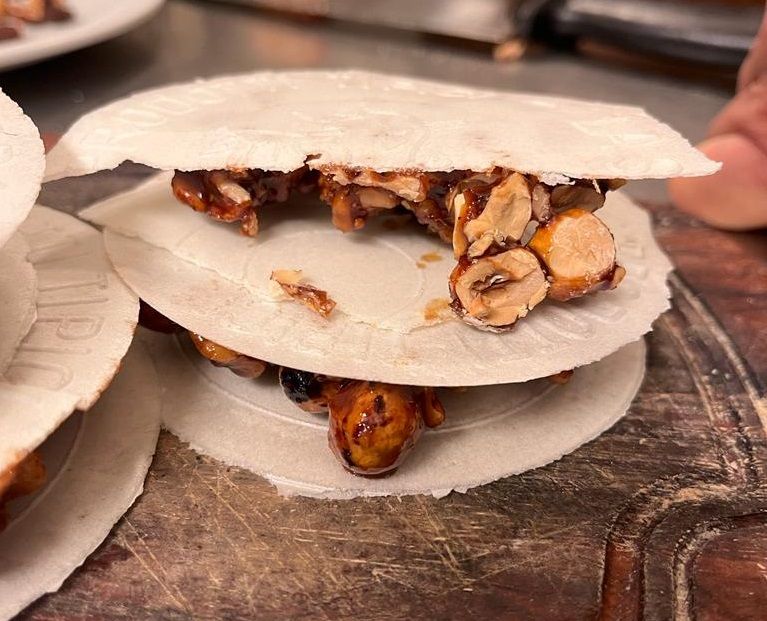
The Christmas menu in Liguria has always been a lavish affair celebrated on December 25th in homes and restaurants. Here is the what the traditiomal menu looks like in Liguria:
If you decide to spend the Christmas holidays in Genoa and Liguria, you should know that the festive atmosphere largely includes gastronomy. Traditionally, Ligurians have certain fixed points for holidays and some recipes that cannot be overlooked. If you happen to, read the famous poem by Nicolò Bacigalupo, a Genoese poet, about the Genoese Christmas lunch: it mentions a long list of foods, including “maccaroin de Natale in broddo,” and the “Cappon boggîo.” The famous “lattughe pin-ne” (pinhead lettuce) has been and still is in fashion.
In some homes, the menu was more modest. Besides the “natalini” (longer and thicker than those available today) in capon broth, you must try the roasted turkey (“bibbin a rosto“) and the roots of Chiavari, long and bitter, considered a remedy against all the fatty foods consumed. Not to be missed is the Cappon Magro, a sumptuous fish dish prepared on Christmas Eve but available in the best places practically throughout the holiday season until Epiphany. Fortunately, many of these recipes have been adopted by famous restaurants in recent years, and their Christmas lunch offerings have become increasingly popular.
Natalini in brodo
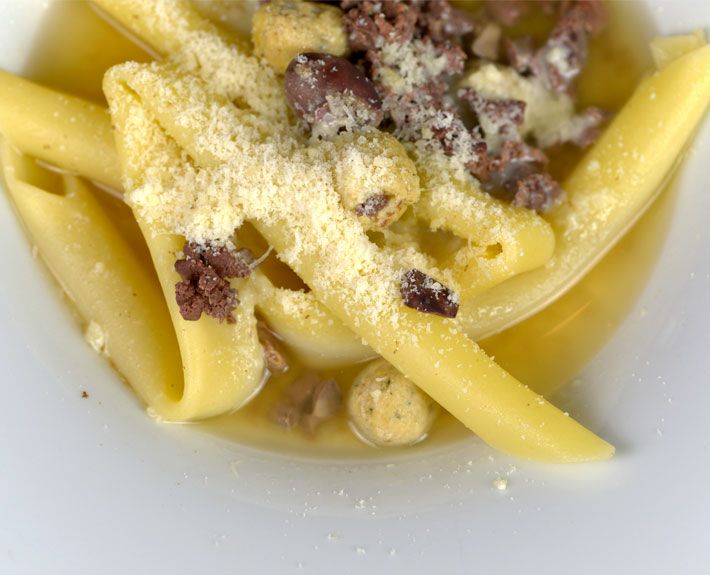
As you can imagine, “natalini” is a particular type of pasta: smooth macaroni, no more than 20 centimetres long, called “Natalini” because they are typical of this time of year. They have become very popular in recent years, even in restaurants. The secret, of course, is the capon broth, which you’ll enjoy scooping the “natalini” with a spoon, along with tripe, cardoons, and sausage.
His Majesty the Cappon Magro
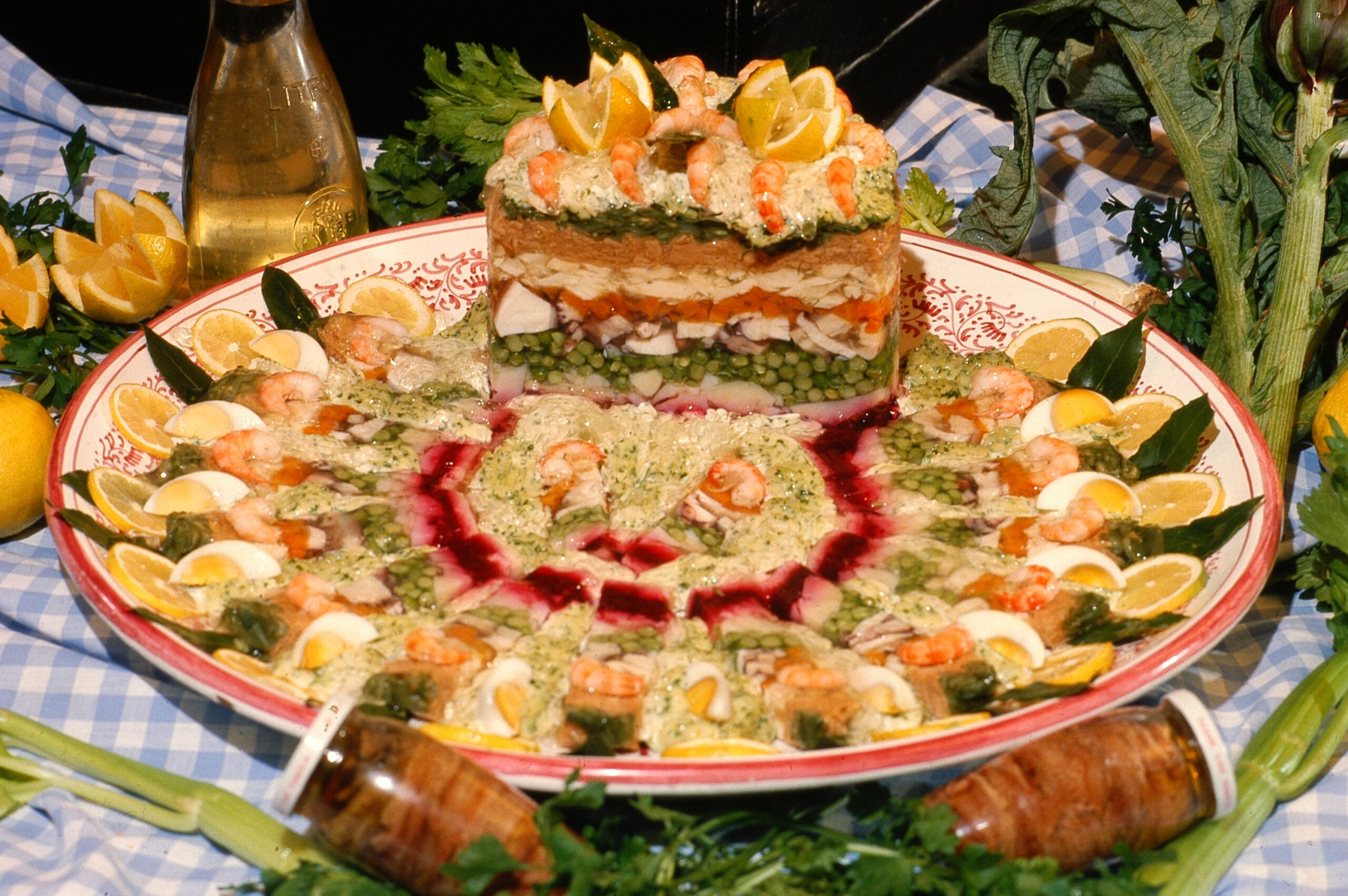
Already in past centuries, Cappon Magro was the dish with which noble Genoese families observed the abstinence from meat, as prescribed by Catholic religious indications, while still being able to enjoy a truly flavourful dish. Today, if you want the best at the table, you’ll find this dish at the top of the list of Christmas must-haves in restaurants throughout Liguria. You’ll be amazed by the beauty of the composition, often baroque and left to the creativity of the chef. Other palate delights include the balanced flavours of fish capon or sea bream, cured tuna, anchovies, shrimp or prawns, lobster, and optionally oysters. But the surprise is the terroir touch because when you open the treasure chest of this gastronomic delight, you’ll find green beans, zucchini, salsify, carrots, potatoes, beets, cauliflower, in a tasty sea where extra virgin olive oil is enhanced with the famous green sauce made of parsley, pine nuts, capers, salted anchovies, hard-boiled eggs, bread crumbs, olives, and garlic.
Pandolce, when Christmas “rises”
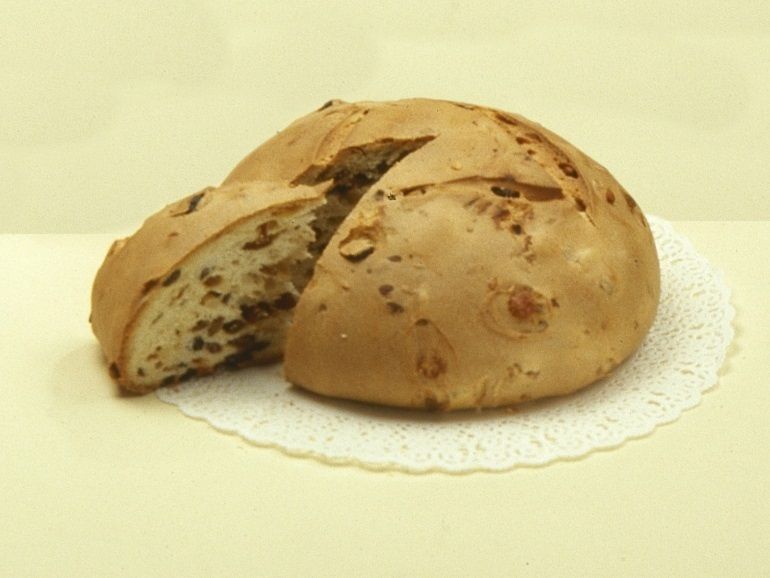
More than a tradition, tasting Pandolce from Genoa will make you feel like waving a gastronomic flag: a symbol of Genoa like the Lantern. And like the Lantern, it has remained the same for many centuries: natural leavening, candied fruits chosen from the best products, Smyrna raisins, Pisan pine nuts. Simple in its preparation and at the same time rich in ingredients, when you taste it, you must remember that until the last century, it was often prepared in homes, and Genoese, generation after generation, handed down the family recipe: with or without nuts or with one type of candied fruit instead of another; in every home, there was a different sweet. Also passed down was the “mother yeast,” an essential ingredient to make the pandolce rise. Today, times have changed, but the tradition remains very much alive. You can buy pandolce in pastry shops and bakeries.
The Spongata in the east
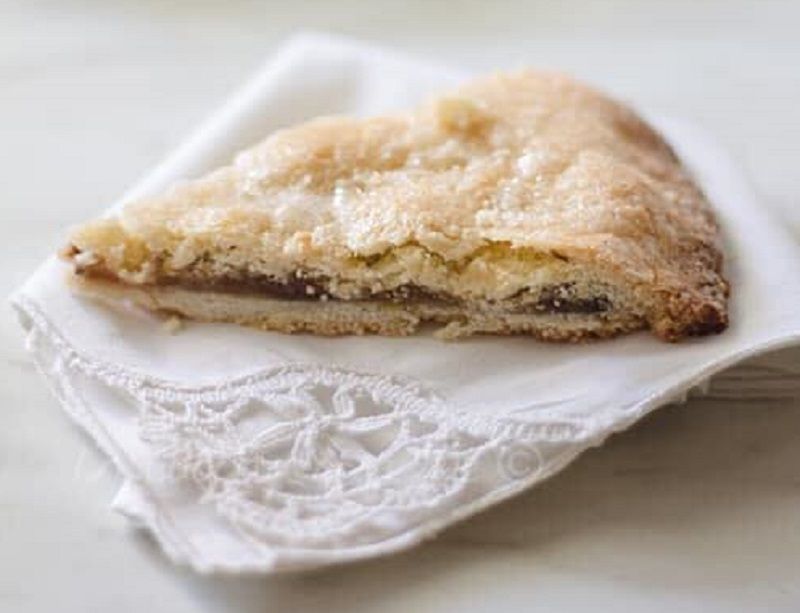
If you happen to pass through the province of La Spezia, between the city, the Cinque Terre, and the Sarzanese, you will discover this ancient sweet food said to have been prepared by the Romans (sponga) and then the Etruscans. The name “spongata” probably derives from “spongia,” sponge, because of the spongy and irregular appearance of its surface, a particular shortcrust pastry (some also use shortcrust pastry) with wine or liquor inside. There are different variations of spongata: some use quince jam, some fig jam, some only honey; I used fig jam.
The Cubaita in the west
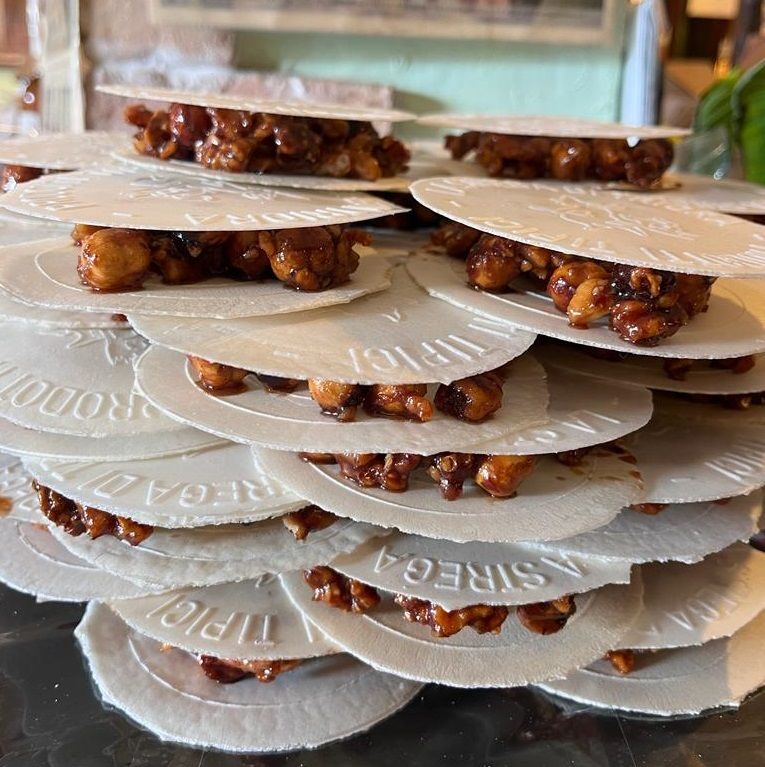
If you have chosen the mild and beautiful Riviera dei Fiori for a Christmas vacation, don’t forget to taste the cubaita, a typical sweet from Triora and Isolabona, but present throughout the province of Imperia. It’s a kind of nougat and is everyone’s holiday sweet treat thanks to its ingredients, available or easily found in the agropastoral environment of our valleys. The recipe is simple: two wafers enclose a filling of hazelnuts, walnuts, and almonds in variable proportions depending on the altitude of the village. Everything is held together by honey which was the sweetener available to everyone in past times, unlike sugar which could only be purchased by the wealthy.



